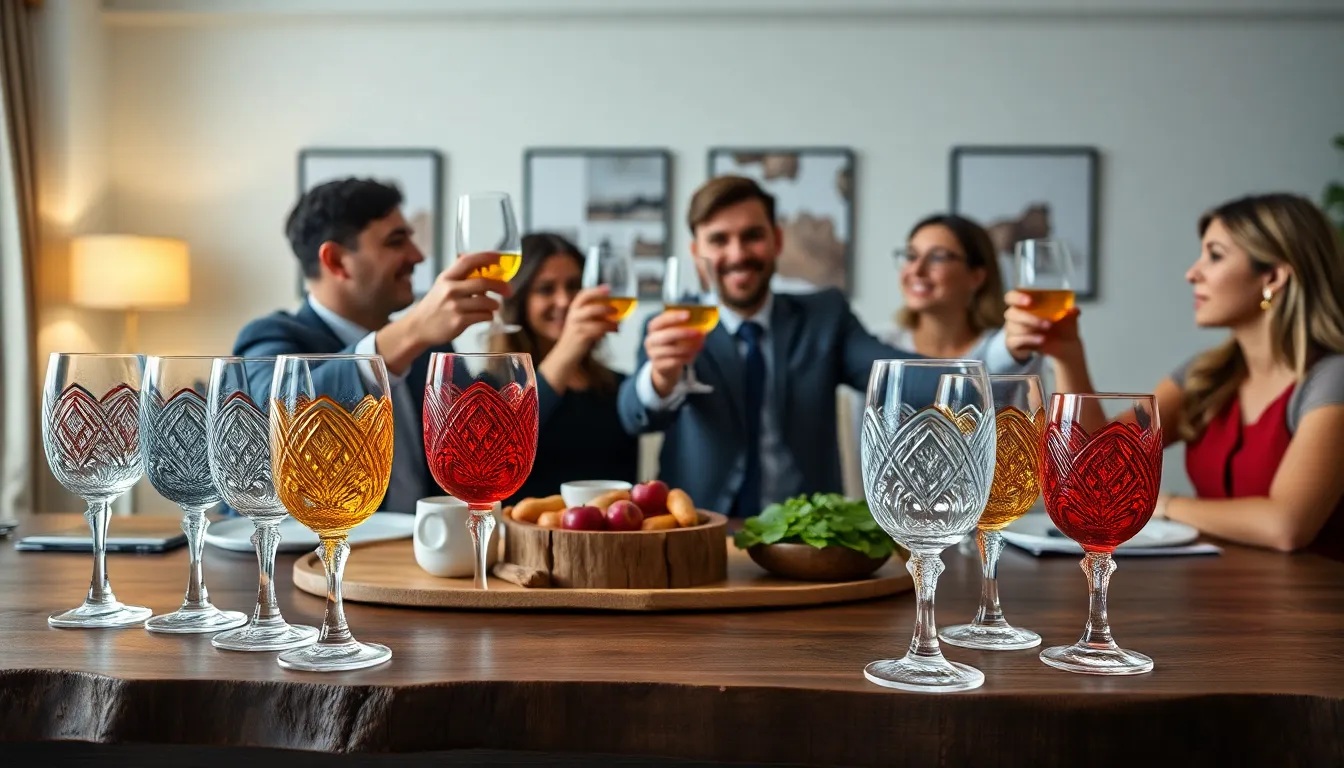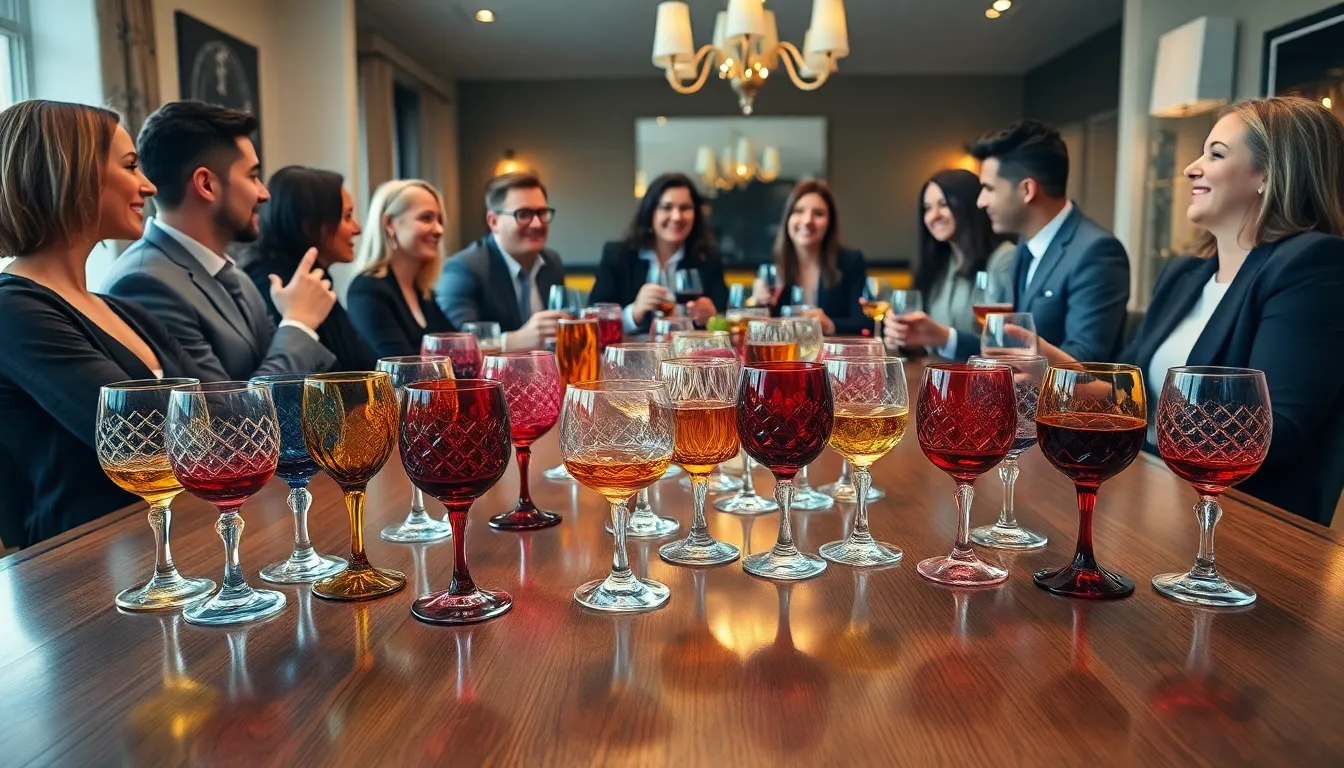Rämergläser, or German beakers, aren’t just your average glassware: they’re more like the quirky relatives at a family reunion, colorful, a bit odd, but utterly enchanting. Ever felt the urge to impress your friends at a dinner party? You might not think twice about using these beautiful, vintage pieces, but trust us, they can spark a conversation more intriguing than the steak on your plate. Join us as we navigate the crystal-clear waters of their historical significance, craftsmanship, cultural impact, and much more. Grab your favorite drink, sit back, and let’s explore this captivating world of decorative glassware.
Rämergläser

Rämergläser dates back to the late Middle Ages, primarily thriving in German-speaking regions. These fascinating vessels were often used during social events, adorning tables as both practical and decorative items. Initially crafted from glass as a luxury material, they soon became symbols of status and craftsmanship.
You might wonder how these glasses found their way into everyday life. As glassblowing techniques evolved, so did the designs of these beakers. The intricate patterns and rich colors reflect a commitment to artistry that resonates even today. One popular motif included key symbols of pride and power, showcasing the owner’s wealth and taste while boosting the drinking experience.
These glasses weren’t just for show. When toast times came around, and with many a hearty cheer, the clink of a Rämergläser would echo in celebration. In the context of history, they symbolize communal gatherings and the importance of toasting to health and prosperity, making them quite the conversation starters through the centuries.
Craftsmanship and Design Variations
The craftsmanship behind Rämergläser is nothing short of mesmerizing. Skilled artisans historically dedicated their lives to perfecting the art of glassmaking. They employed various techniques, such as blowing, casting, and cutting, to create distinct glass forms with elegance and charm.
You’ll find that each design encapsulates a story. For instance, the popular cut glass technique involves intricate patterns that catch light beautifully, making every twist and turn fascinating. Other styles include enamel-painted decorations, where bold colors meld with creative themes, captivating anyone gazing into them.
One cannot ignore the variations across regions. The products from Rhineland differ significantly from those crafted in Bavaria. Whether it’s the shapes, colors, or motifs, each piece tells a unique tale of geographical influence. This diversity enriches the experience of owning, collecting, or simply appreciating these delightful beakers.
Cultural Impact and Modern Usage
Rämergläser continues to cast its spell on contemporary culture. While these glasses may have seen their heyday centuries ago, their appeal has not waned. Today, they grace everything from chic dinner parties to modern art displays, proving that their charm has indeed transcended time.
Culturally, they symbolize a connection to heritage. Enthusiasts and collectors often share personal stories tied to specific pieces, creating bonds over shared appreciation. At crafting events, you may witness diverse groups learning how to decorate or replicate classic designs, fostering both a communal spirit and artistic expression.
Modern-day baristas and home mixologists have also embraced the Rämergläser for crafting cocktails. The aesthetic appeal can elevate any drink from mundane to magnificent. Who wouldn’t enjoy the feeling of sipping a handcrafted cocktail from a vintage glass linked to a centuries-old tradition? As it turns out, utility and beauty can coalesce spectacularly.
Collecting Rämergläser: Tips for Enthusiasts
For those bitten by the collecting bug, diving into the world of Rämergläser can be both thrilling and rewarding. First and foremost, it’s advisable to educate oneself about different styles and historical context. Books, online forums, and museum exhibitions serve as valuable resources for beginners.
Knowing where to find these treasures is key. Antique shops, flea markets, and online auction sites often harbor hidden gems waiting to be rediscovered. Patience is vital: sometimes the best finds happen when you least expect them. Also, consider networking with other enthusiasts. Joining online groups or local clubs can open doors to exclusive deals and insightful discussions.
Once you start building your collection, maintaining the glasses’ condition is crucial. Make sure to clean them gently, taking care not to damage any intricate patterns. Displaying them in a dedicated space, preferably with soft lighting, draws attention to their beauty while protecting them from unwanted breaks.
Rämergläser in Contemporary Art and Design
The artistic prowess embedded in Rämergläser has not gone unnoticed in contemporary settings. Artists and designers are increasingly using these beakers as inspiration for their own work. By incorporating vintage styles into modern aesthetics, they create a delightful bridge between past and present.
Exhibits showcasing Rämergläser have popped up in galleries, celebrating their unique elegance while inviting new interpretations. This blend of history and innovation serves as a reminder that art is ever-evolving while drawing on rich traditions.
Workshops that teach participants how to create their own glass art have gained popularity as well. This hands-on approach not only fosters a love for craftsmanship but also encourages a personal connection to this wonderful art form. It’s not just about admiring the past: it’s about engaging with it and creating a contemporary dialogue.

